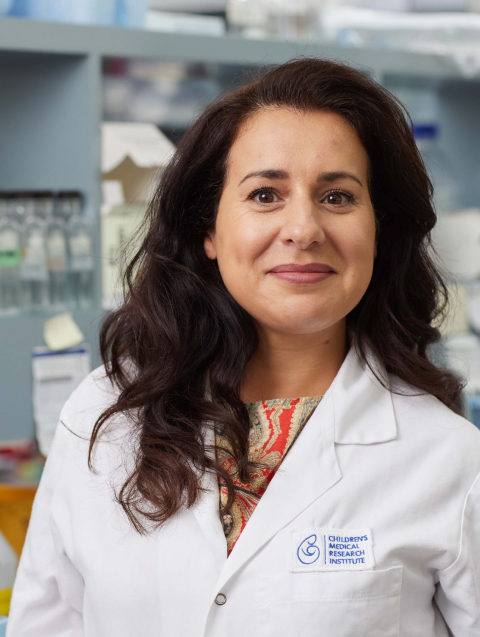Project Aim
The aim of this project was to establish proof-of-concept for a new type of treatment method using adeno-associated viral vectors (AAV) along with a gene editing tool called CRISPR-Cas9, designed specifically for Usher Syndrome subtype 1 (Usher 1b and 1f subtypes) Australian patients. This treatment was tested on retinal organoids (mini versions of the retina) grown from cells taken from these patients to assess for treatment efficacy.
Project Results and Impact
- The process of growing retinal organoids in the lab was improved ensuring the optimal production of photoreceptor cells, and other types of retinal cells.
- Safe viral vectors known as AAVs were developed to repair specific sections of genes associated with Usher Syndrome. The most effective guide RNAs, which act like messengers in the cells, were identified to assist in the gene editing process (genetic scissors), enabling efficiencies in treating retinal organoids in the lab.
- The research demonstrated strong cutting efficiency in the treated retinal organoids, indicating the potential effectiveness of the gene editing approach. The use of small fat particles called lipid nanoparticles (LNPs) was successfully tested and therefore may be a new way to deliver gene therapy to the retina without keeping the gene-editing tools working for too long which may increase the risk to disruptions in the DNA.
- Specific biomarkers were identified, and tests were created to check whether the gene therapy was working. These tests help us understand if the gene therapy is effective in treating the disease.

Chief investigator:
Dr Anai Gonzalez-Cordero
Children’s Medical Research Institute, Sydney
Co-investigator/s:
Dr Samantha Ginn, Children’s Medical Research Institute, Sydney
Work of PhD student Miss Vivienne Kaiser, Children’s Medical Research Institute, Sydney
Grant awarded:
$55,774 (2023)
Timing:
1 Year
Research Impact Reports
Virtual Reality Assessment of Functional Vision in achromatopsia
Project Aim This project aimed to develop and validate a virtual reality (VR) mobility task...
Advancing Usher syndrome type 1B gene therapy with split intein
Project Aim Usher syndrome is the leading cause of combined hearing and vision loss worldwide....
Therapies for currently untreatable autosomal recessive IRDs
Project Aim This project aims to develop gene replacement therapies for autosomal recessive (AR) inherited...
Using RNA-silencing to tackle neuroinflammation in retinal degeneration
Project Aim The aim of this project was to develop...




